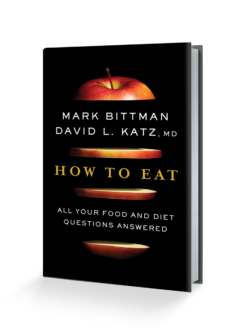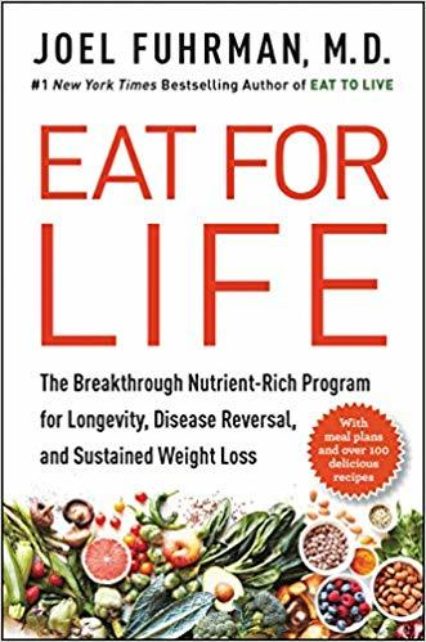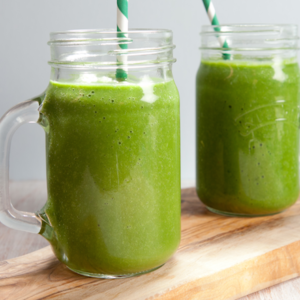Book Review: What Are We Supposed to Be Eating?
Eat

Americans’ relationship with food is seriously off balance. We live in a country that produces Flamin’ Hot Cheetos and where people pee on little sticks to see if they are in ketosis. Both seem … extreme. With all the conflicting advice and fads and billions of dollars of pressure from food marketers, it’s hard to figure out what to put in your mouth. Or is it?
Two new books, both featuring renowned experts, confidently dive into the modern American food conversation with reassuring, practical advice.
How to Eat is by Mark Bittman and David L. Katz, MD. Bittman has written more than 20 books and is currently the Special Advisor on Food Policy at Columbia’s Mailman School of Public Health. His co-author, Katz, is an expert on nutrition, weight management, and the prevention of chronic disease. A popular 2018 story they wrote together for the online publication Grubstreet was in a Q&A format; that article inspired the format and tone of this book.
Eat for Life is by Joel Furhman, MD, whose previous works include Super Immunity and who specializes in reversing and preventing disease using nature and nutrition. Both books are lively, enjoyable reads. How to Eat feels like a conversation, with questions like “What’s the healthiest kind of fish?” followed by concise, simple advice from Bittman and Katz. Furhman’s book also has chunks of actionable advice and is dotted with inspiring before- and-after stories of people who followed what he calls the found relief from their symptoms of multiple sclerosis—it’s pretty amazing. The book also includes meal plans and recipes.
Both books rely on science and a steady, no-B.S. approach. And the two books agree on many principles, which is heartening. The bottom line is that if you want to be healthy, you should follow a mostly plant-based diet with little to no animal products, eat whole foods, shun processed and fake foods, and keep alcohol to a bare minimum. The best foods are beans and lentils, veggies and fruits, and nuts and seeds. And, yep, you also need to move your body to stay healthy.
Bittman and Katz often remind the reader to think “instead of what?” when making a food choice. “Marketers may want you to believe otherwise so that you buy their products, but really it’s not only about any single food or drink, but what it’s replacing.” For example, tea is a healthy replacement for soda, tea and coffee probably are about the same, and good old water is best of all. They also often discuss food choices as important not only to the individual, but also to the planet that 7 billion of us have to share.
Fuhrman focuses his attention on a lower-calorie, high nutrient diet, emphasizing foods like kale and bok choy over choices like pizza and energy drinks. He recommends daily consumption of what he calls G-BOMBS: greens, beans, onions, mushrooms, berries, and seeds. He also discusses how eating nutrient- rich foods can help with depression, dementia, cancer, and autoimmune diseases, both from a preventative and reversal standpoint.
In both books, the authors excel at keeping it simple. They cut through the hype and the clickbait. Reading them, you’re going to feel more empowered in your food choices and be inspired to start eating more healthfully. Because, as Fuhrman writes, “Everything you put in your mouth counts toward determining your future health.”

For his book Eat for Life, Dr. Fuhrman developed a food-scoring system. Nutrient IQ Scores, as he calls them, are based on the health-giving properties of foods relative to their portion sizes. His ten healthiest foods are:
1. Kale, cooked
2. Collards, cooked
3. Mustard greens, cooked
4. Turnip greens, cooked
5. Watercress, cooked
6. Arugula, cooked
7. Swiss chard, cooked
8. Boy choy
9. Broccoli
10. Broccoli rabe
At the bottom of the scale, you’ll find foods like cookies, pie, apple juice, crackers, and energy drinks, all of which earned a big fat zero on the Nutrient IQ Score.














